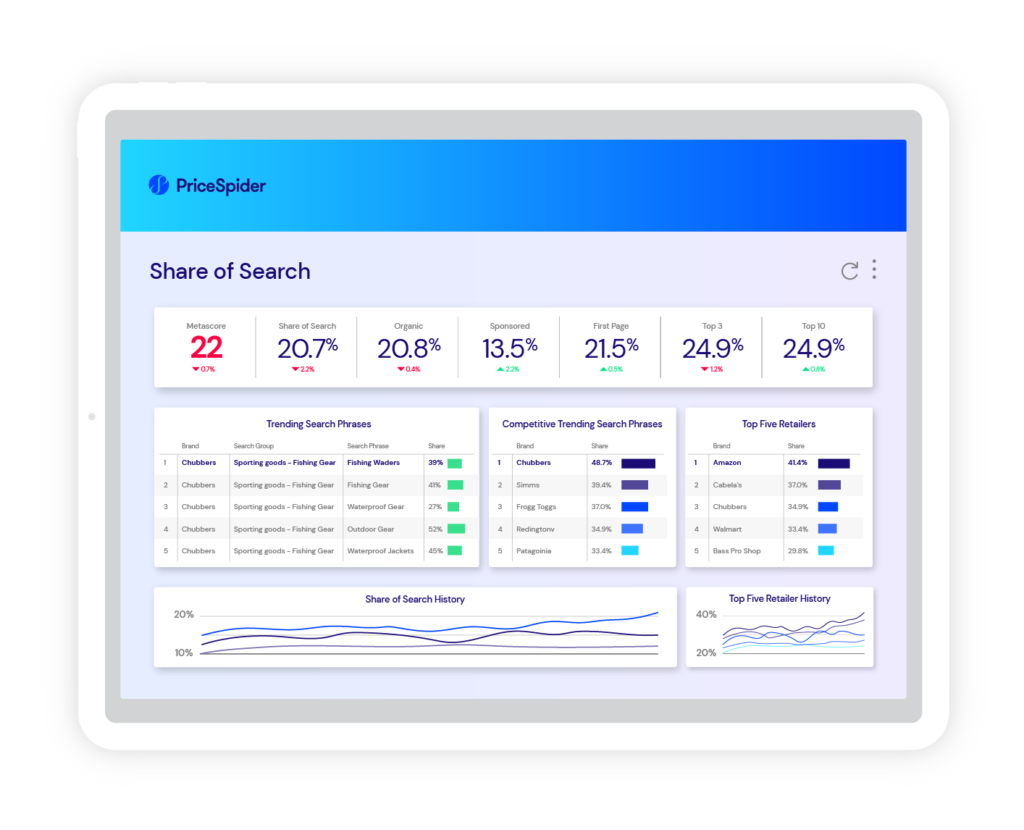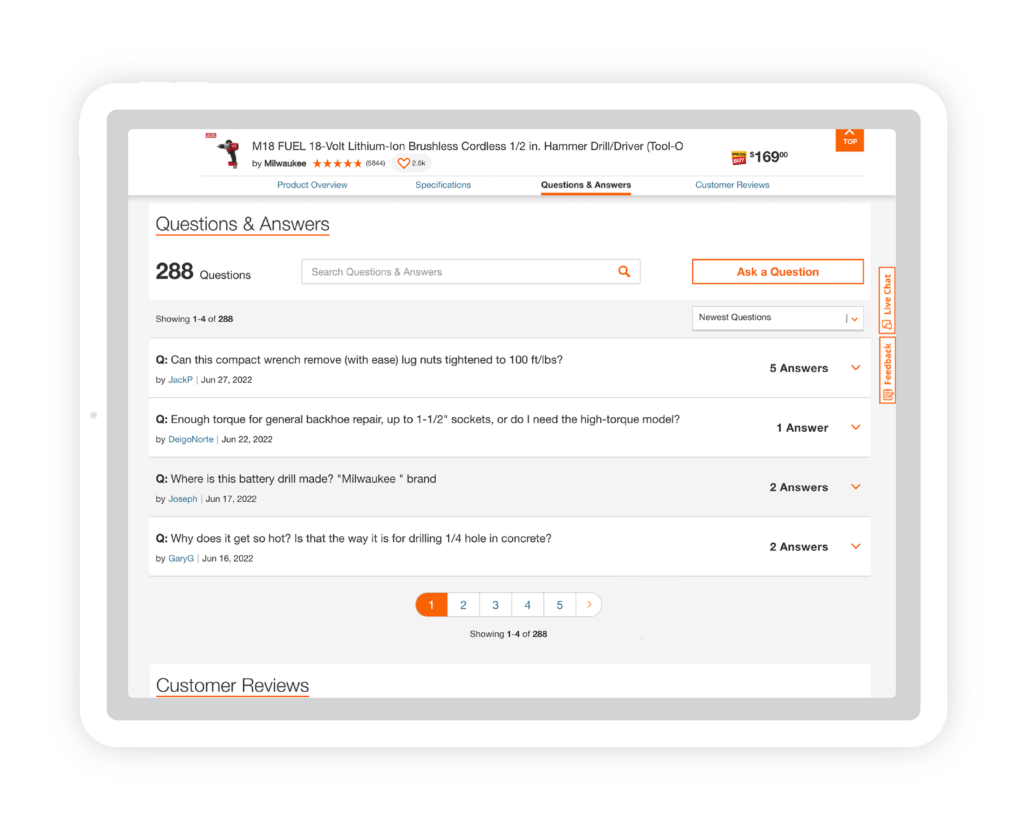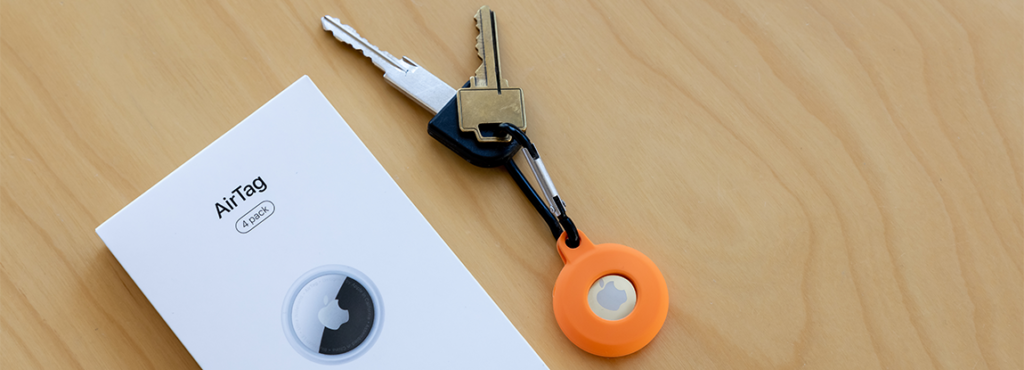Honey! Where are my keys?! We all know the feeling of panic when we are pressed for time and can’t seem to find the ONE thing that USUALLY gets put on the plate near the front door. But for some silly reason, we didn’t put them where they are supposed to go. Now putting your brand’s products in a place where consumers can find them is surely not as absent-minded a process as leaving your keys in your pocket, but imagine if you didn’t have the right methods in place to ensure your products weren’t as difficult to hunt down as those misplaced keys.
This is a common challenge for brands in the era of ecommerce. The digital shelf is vast and organizing it so that your products aren’t “hidden under the couch cushions” so to speak, is paramount. Luckily, we have an Apple AirTagⓇ keychain of sorts to ensure consumers know right where to find your brand’s products.
The digital shelf is where customers find, compare, research, and buy products online. It’s the virtual equivalent of physical shelves in a brick-and-mortar store. While your most loyal customers may be determined to find your products, most consumers will simply take what they can get—if your brand isn’t discoverable enough on the digital shelf, they won’t even know your products exist.
Being available and being discoverable aren’t the same thing. Discoverability is about reducing the work it takes to find your products—it’s your shelf placement. In a physical store, you want your products to be located on end caps, power walls, and prominent shelves in the correct aisles. On the digital shelf, you want them to appear where people expect to find your category, and anywhere else it makes sense for them to encounter you.
With a solid digital shelf strategy, you can make it easier for consumers to find your products and see them as the best choice in your category. Here are five tips to make your products more discoverable.
1. Start with SEO
Retailer search engines are some of the most prominent flash points on the digital shelf. Every ecommerce brand knows that showing up for the right terms is critical to their success. And anytime your products aren’t getting as much visibility as you’d like, optimizing for your product, product category, and retailer is usually the best place to begin.
Every retailer has a unique search engine, and it’s important to understand their norms and conventions. What do the top titles have in common on each site? What details do they include? Are they rewarding product pages with video?
You probably already know many of the most popular ways consumers describe your product category to find items like yours. Working these terms into your product titles, descriptions, and supporting content is a critical step, regardless of retailer.
Increasing discoverability through SEO is an ongoing process that needs ongoing monitoring. Whether you’re already on the right track or you have your work cut out for you, PriceSpider’s Brand Monitor can track your product’s Share of Search—helping you see where you’re gaining ground and where competitors have an edge.

2. Address shopper barriers and needs
As your customers explore your category and encounter your product pages, barriers often prevent them from recognizing your product as the best solution. An inferior product could look like a better choice simply by doing a better job addressing your customers’ barriers and meeting their needs. Over time, this difference will likely manifest in better rankings, visibility, and product recommendations from the retailer. (They want to drive people to product pages that convert the best.)
Maybe there’s something people need to understand before they feel confident that they can use your product. Or they’re looking for confirmation that it’s made from a particular material or comes in a specific configuration they need. Perhaps they’re hesitant because of your product’s potential environmental impact. Or they don’t know if they need accessories (like a separate battery pack) for your product to work out of the box. Maybe it’s hard to visualize your product’s size—or what it will look like in their environment—from the pictures. For some tech products, consumers may have concerns about privacy, data collection, or security.
The more your product titles, descriptions, images, and enhanced content can overcome these barriers and satisfy these needs, the better your page will convert and the more discoverable it will become.
3. Draw from customer questions and reviews
Not sure what your customers’ needs and barriers are? Odds are they’ve been trying to tell you about them in questions and reviews.
These user-generated aspects of your PDP let both customers and potential customers fill in the gaps on your product page assets or draw attention to things people may miss otherwise. They can also help you think about your products the way actual customers do.
You might discover new use cases and applications, benefits you hadn’t called attention to, or even problems you should address up front. There could be a spec you forgot to include or that got buried in copy. Or maybe a customer wants to know how to order a replacement part. Maybe they even described your product category differently.

It’s ultimately up to you to decide what’s worth pulling from user-generated content, but it also helps to see how others interact with it. Is a question getting a lot of upvotes? Did lots of other people find a review helpful, or comment that they had a similar experience or thought?
4. Align PDPs with retailer and category-specific practices
While it’s important that your product pages consistently represent your brand across channels, you can’t ignore retailer-specific practices, either. For example, Amazon wants your image carousels to include an authenticity reassurance image to give customers more confidence that they’re getting official products from your brand. Walmart takes a mobile-first approach to PDPs and wants your first image to be optimized for mobile with clear image text. And Target wants your images to avoid text altogether.
Aligning your product pages with a retailer’s guidelines helps your products:
- Look like they belong with the retailer’s catalog
- Meet customers’ expectations
- Score higher on the retailer’s criteria
All of this inevitably contributes to better placements in search results, making your products more discoverable.
5. Take a page from your competitor’s playbook
You and your competitors are constantly innovating as you battle for the most prominent placement in your category. Inevitably, they’re going to have some good ideas. They might find another popular way to describe your product category. Or a use case that just makes sense. Maybe they beefed up their benefits, and now they’re pulling ahead in the rankings.
When a competitor gets something right on their PDP that applies just as much to your own product, it’s worth exploring:
- Does that keyword belong in your title too?
- Are consumers also using your product this way? Would they?
- Is that change impacting their prominence on the shelf?
Ideally, you should know your competitors’ pages nearly as well as your own. If something changes and they start outperforming you, it might be time to borrow their tactics and emulate their approach.
With Brand Monitor’s Share of Search, it’s easier to recognize when a competitor’s changes to their product page are impacting their rankings—you can track their position over time from the same place you track your own. This can give valuable insights into how the digital shelf is changing and what you can do to close gaps.
Get discovered on the digital shelf
The digital shelf is where all the magic happens in ecommerce. It’s where customers find, compare, and purchase the products that feel like the best fit. And the best products don’t always come out on top. If you want to win the digital shelf, you need a competitive advantage. And that’s where Brand Monitor comes in.
Brand Monitor equips you to monitor digital shelf metrics, analyze your performance, and react to changes in the marketplace.
Want to see how it works?

